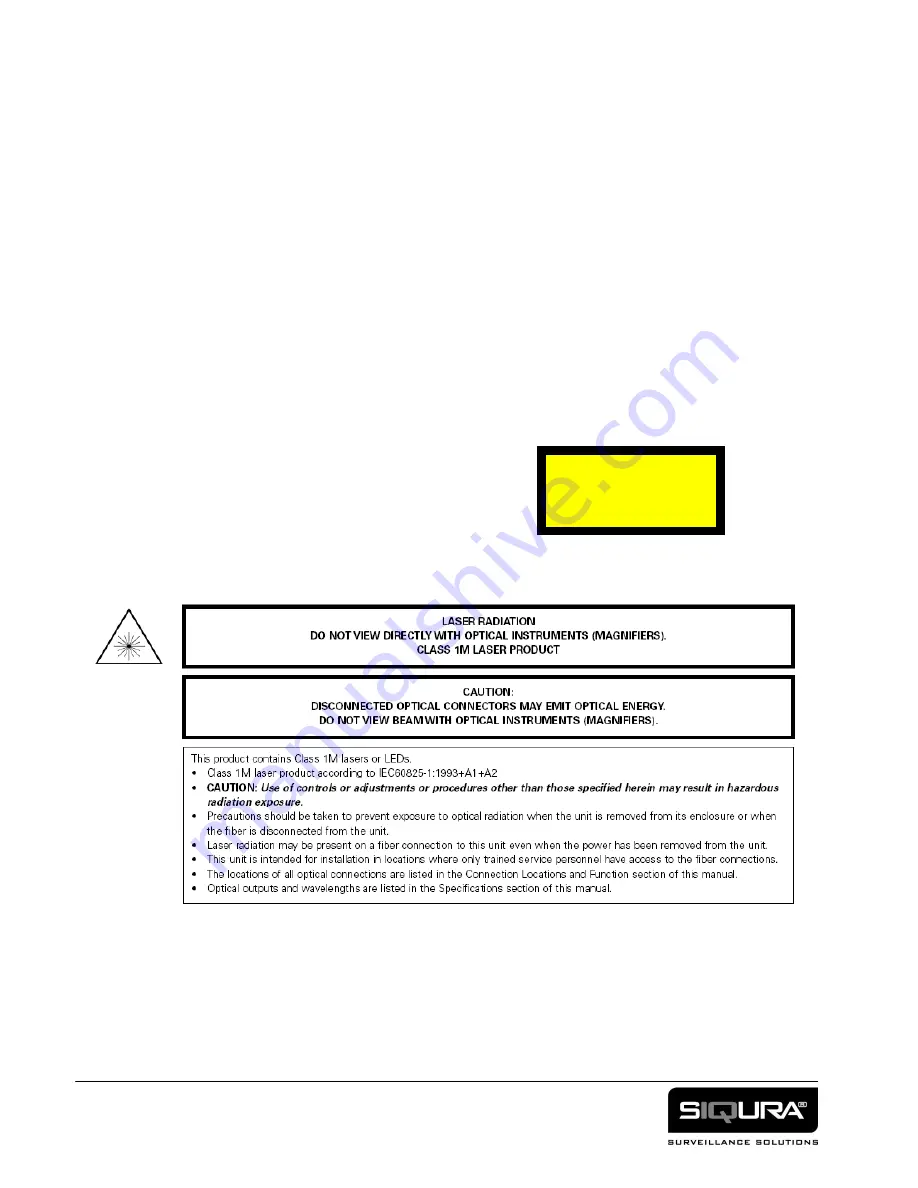
6
8. Safety, EMC, ESD
General
The safety information contained in this section, and on other
pages of this manual, must be observed whenever this unit is
operated, serviced, or repaired. Failure to comply with any
precaution, warning, or instruction noted in the manual is in
violation of the standards of design, manufacture, and intended use
of the unit.
Installation, adjustment, maintenance and repair of this equipment
are to be performed by trained personnel aware of the hazards
involved. For correct and safe use of the equipment and in order to
keep the equipment in a safe condition, it is essential that both
operating and servicing personnel follow standard safety procedures
in addition to the safety precautions and warnings specified in this
manual, and that this unit be installed in locations accessible to
trained service personnel only.
Siqura assumes no liability for the customer’s failure to comply
with any of these safety requirements.
UL/IEC/EN
60950-1: General safety requirements
The equipment described in this manual has been designed and
tested
according
to
the
UL/IEC/EN
60950-1
safety
requirements.
If there is any doubt regarding the safety of the equipment, do not
put it into operation.
This might be the case when the equipment
shows physical damage or is stressed beyond tolerable limits (e.g.
during storage and transportation).
Before opening the equipment, disconnect it from all power sources.
The equipment must be powered by a SELV
*)
power supply.
When this unit is operated in extremely elevated temperature
conditions, it is possible for internal and external metal surfaces to
become extremely hot.
Optical safety
This optical equipment contains Class 1M lasers or LEDs and
has been designed and tested to meet IEC 60825-1:1993+A1+A2
and IEC 60825-2:2004 safety class 1M requirements.
Optical equipment presents potential hazards to testing and
servicing personnel owing to high levels of optical radiation.
When
using magnifying optical instruments, avoid looking directly into
the output of an operating transmitter or into the end of a fiber
connected to an operating transmitter, or there will be a risk of
permanent eye damage
.
Precautions should be taken to prevent
exposure to optical radiation when the unit is removed from its
enclosure or when the fiber is disconnected from the unit. The
optical radiation is invisible to the eye.
Use of controls or adjustments or procedures other than those
specified herein may result in hazardous radiation exposure.
The installer is responsible for ensuring that the label depicted
below (background: yellow; border and text: black) is present in
the restricted locations where this equipment is installed.
The locations of all optical connections are listed in the Indications
and Connectors section of this manual.
Optical outputs and wavelengths are listed in the Technical
Specifications section of this manual.
Hazard Level 1M

























